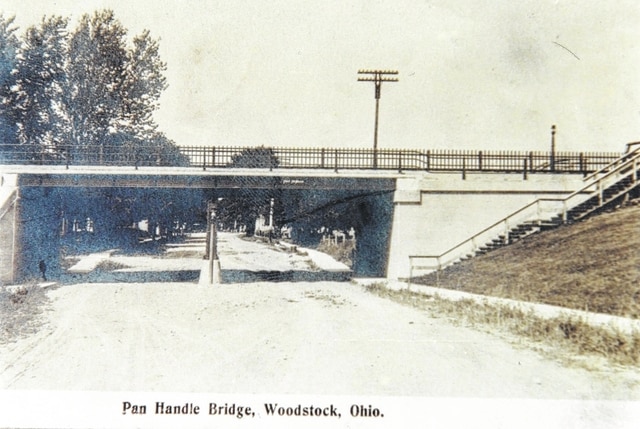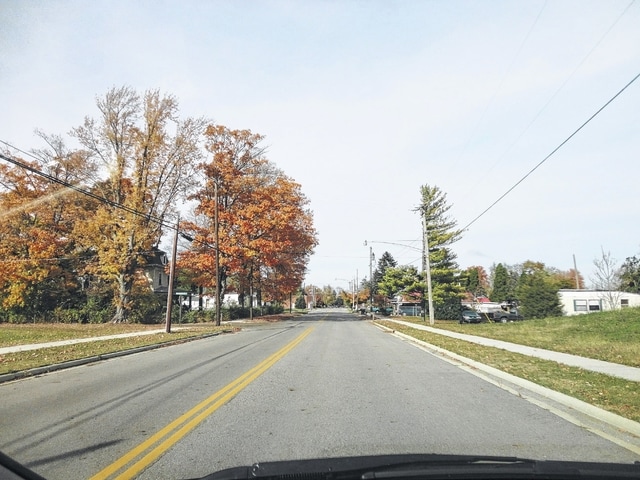

The only thing in the “Then” photograph of the Pan Handle Bridge to date is the utility pole, which means it was taken after 1900. This train bridge that once welcomed you to Woodstock, Ohio, coming into town from the south on State Route 559 (Main Street), was used to accommodate the Pennsylvania Railroad. “By the 1850’s, Woodstock was producing (products) to the extent that railroad transportation was necessary for further progress (since other horseless transportation had not been invented yet). The Pennsylvania railroad was being extended from Columbus west, and it was said that $250,000 in subsidies would be necessary to turn the route through Woodstock and Urbana to Piqua. Mechanicsburg, being on a more direct route, was competing for the railroad. Woodstock had one man, Erastus Martin, who was more than a match in diplomacy and financial ability for all the rest. It is said he left no stone unturned and finally met with the railroad officials, placing before them monies and pledges amounting to $100,000. The railroad was guaranteed and Woodstock was put on the map. Work was begun in 1850 and three years later the first train was ready to roll through Woodstock, and by 1854 on to Piqua and west.……The railroad traffic in and out of Woodstock grew until it became one of the best stations along the route. Today (1970) there is no depot or other landmark that would identify Woodstock on the railroad (except for this train bridge’s man-made elevation in the natural terrain),” according to A Tour of the Past 1870-1970 Woodstock, Ohio, a souvenir Centennial program booklet by Betty C. Oberdier.
The Pan Handle Bridge was important because it allowed trains to stop, refuel, load, and unload cargo and passengers at the Pennsylvania Train Station that was just off to one side of the bridge, and yet not block road traffic on the state route or pose a danger to the through traffic. This railroad was known locally as the Columbus, Piqua and Indianapolis or the Pan Handle Railroad. In Champaign County it made stops not only in Woodstock, but Fountain Park, Brush Lake, Cable, Urbana, Westville, and St. Paris.
As more transportation options became available in the twentieth century, this railroad closed. The last passenger train was 1958 and by 1985 its last owner Conrail abandoned the track entirely. With the increase in larger, longer, taller semi tractor trailers and farm machinery, and with this bridge no longer needed for train traffic it became a road block to traffic, instead of an asset. The bridge was removed from over-top the roadway.
It was a challenge to take the 2016 “Now” photograph, as almost all traces of the once attractive Pan Handle Bridge, the last obvious vestige of a railroad in Woodstock, are gone. Several photos were taken of the area and compared to the “Then” bridge photo. With the bridge removed, the roadway was leveled, the landscape flattened, and new curbs and sidewalks were installed. There is still an ever so slight swell in the landscape still visible on the right of “Now” 2016 view of where the Pan Handle Railroad Bridge once existed. In other parts of Woodstock, parts of the elevated railroad bed can still be found.



